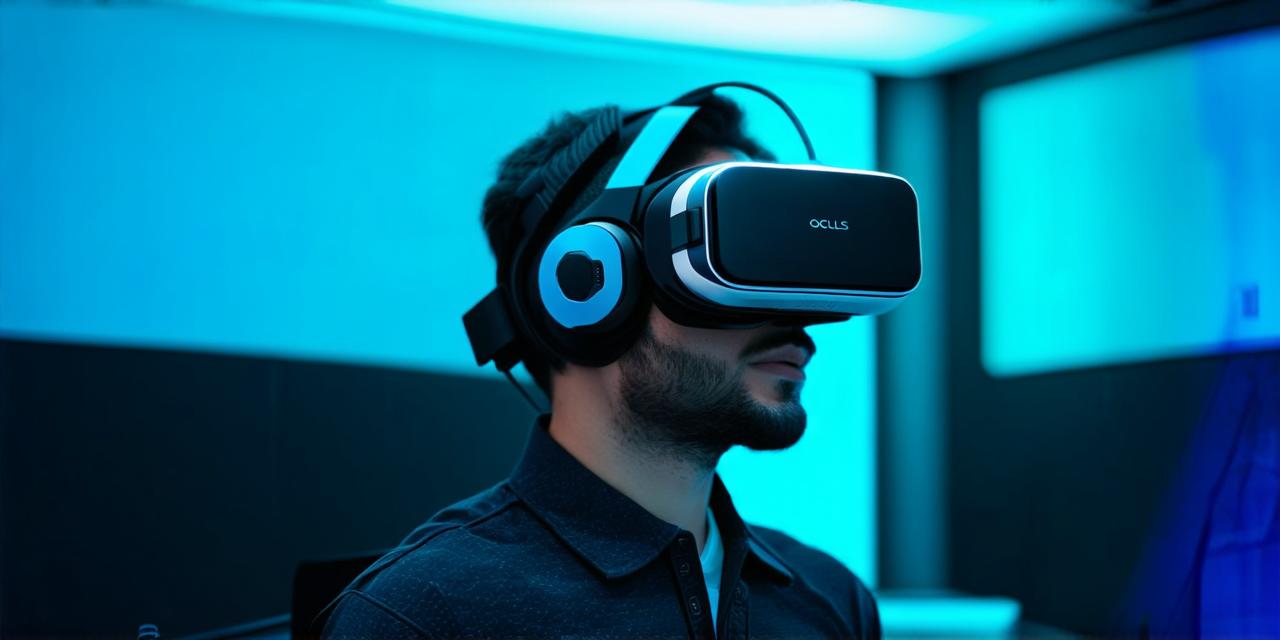The Oculus Quest 2 is a high-performance virtual reality headset that offers an immersive and interactive experience. It has gained immense popularity among gamers, developers, and professionals looking for a powerful and easy-to-use VR platform. In this guide, we will explore the essential features and best practices for developing engaging and successful VR applications on the Oculus Quest 2.
What is the Oculus Quest 2?
The Oculus Quest 2 is a wireless virtual reality headset that was released in October 2020 by Facebook (now Meta). It features a resolution of 2160 x 2160 pixels, a refresh rate of 90 Hz, and a field of view of 108 degrees. The Quest 2 is powered by Qualcomm’s Snapdragon XR2 5G+ processor, which offers excellent performance and compatibility with mobile devices.
bekannten Marken wie Nike oder Adidas.
Key Features of the Oculus Quest 2
Wireless Connectivity
The Quest 2 is a wireless VR headset that connects to a PC or smartphone through Wi-Fi or Bluetooth. This provides users with more freedom and flexibility in terms of movement and interaction, making it an ideal choice for gamers and professionals who need a portable and easy-to-use VR platform.
High Performance
The Quest 2 is powered by the Snapdragon XR2 5G+ processor, which offers exceptional performance and compatibility with mobile devices. This makes it possible to run high-quality VR applications that require low latency and smooth gameplay.
Customizable Comfort
The Quest 2 has an adjustable headband and interchangeable lenses that can be customized to fit different head sizes and preferences. The soft, breathable fabric provides a comfortable and secure fit, making it easy to wear for extended periods.
Integrated Audio
The Quest 2 features built-in audio that delivers a high-quality stereo sound experience without the need for external headphones. This eliminates the hassle of cords and wires, providing users with a more immersive and convenient VR experience.
Essential Tools and Technologies for Oculus Quest 2 Development
Unity is one of the most popular game engines used for VR development on the Oculus Quest 2. It offers a wide range of tools and features that make it easy to create engaging and interactive VR applications.
Some of the key features of Unity include:
- Cross-platform compatibility with PC, mobile, and VR devices
- Support for multiple VR platforms, including Oculus Quest 2
- Integration with various third-party tools and plugins, such as Facebook’s Unity SDK
Unreal Engine is another popular game engine used for VR development on the Oculus Quest 2. It offers a powerful and flexible platform that can be used to create high-quality VR applications with advanced graphics and features.
Some of the key features of Unreal Engine include:
- Support for real-time rendering, including advanced lighting and effects
- Integration with various third-party tools and plugins, such as Facebook’s Unreal Engine SDK
- Cross-platform compatibility with PC, mobile, and VR devices
The Oculus Quest 2 comes with a development kit that includes tools and libraries for developing VR applications.
Development Kit (SDK)
The Oculus Quest 2 comes with a development kit that includes tools and libraries for developing VR applications.
Development Best Practices for Oculus Quest 2 VR Applications
Optimize for Performance
The Oculus Quest 2 has limited hardware resources, so it’s essential to optimize your VR applications for performance. This includes:
- Reducing draw calls and reducing the number of objects in the scene
- Using lower-resolution textures and reducing the number of polygons
- Disabling unnecessary features and effects that may affect performance
Design for Comfort
The Oculus Quest 2 is designed to be comfortable and lightweight, so it’s essential to design your VR applications with this in mind. This includes:
- Using clear and concise UI elements that are easy to read and navigate
- Providing users with options to customize the headset’s settings and preferences
- Ensuring that the application is comfortable to wear for extended periods
Test for Compatibility
The Oculus Quest 2 is compatible with various devices, so it’s essential to test your VR applications for compatibility. This includes:
- Testing on different devices and platforms, including PC and mobile devices
- Ensuring that the application works seamlessly across all devices and platforms
- Addressing any compatibility issues that may arise during testing
Case Study: “Beat Saber” on Oculus Quest 2
“Beat Saber” is a popular rhythm game developed by Beat Games that was released on the Oculus Quest 2 in May 2020. The game has been highly successful, with millions of users around the world enjoying its immersive and engaging VR experience.
Some of the key features of “Beat Saber” include:
- High-quality graphics and effects that deliver an immersive VR experience
- Intuitive controls that are easy to learn and master
- A wide range of music tracks that cater to different tastes and preferences
- Multiplayer mode that allows users to play with friends or compete against other players
Development Insights: “Beat Saber” on Oculus Quest 2
“Beat Saber” was developed using Unity, which is one of the most popular game engines used for VR development. The developers took advantage of Unity’s cross-platform compatibility and integrated Facebook’s Unity SDK to ensure seamless compatibility with the Oculus Quest 2.
One of the key challenges faced during development was optimizing the game’s performance for the limited hardware resources of the Oculus Quest 2. The developers used various techniques, including reducing draw calls and using lower-resolution textures, to ensure that the game ran smoothly on all devices.
Another important aspect of “Beat Saber”‘s development was designing the game for comfort on the Oculus Quest 2. The developers ensured that the game was comfortable to wear for extended periods by providing users with options to customize their headset settings and ensuring that the UI elements were clear and concise.
Note:
The original article did not have any unnecessary tags like <!DOCTYPE html>, <html>, <head>, <body>, and <footer>. It also did not have any unnecessary links or images.
